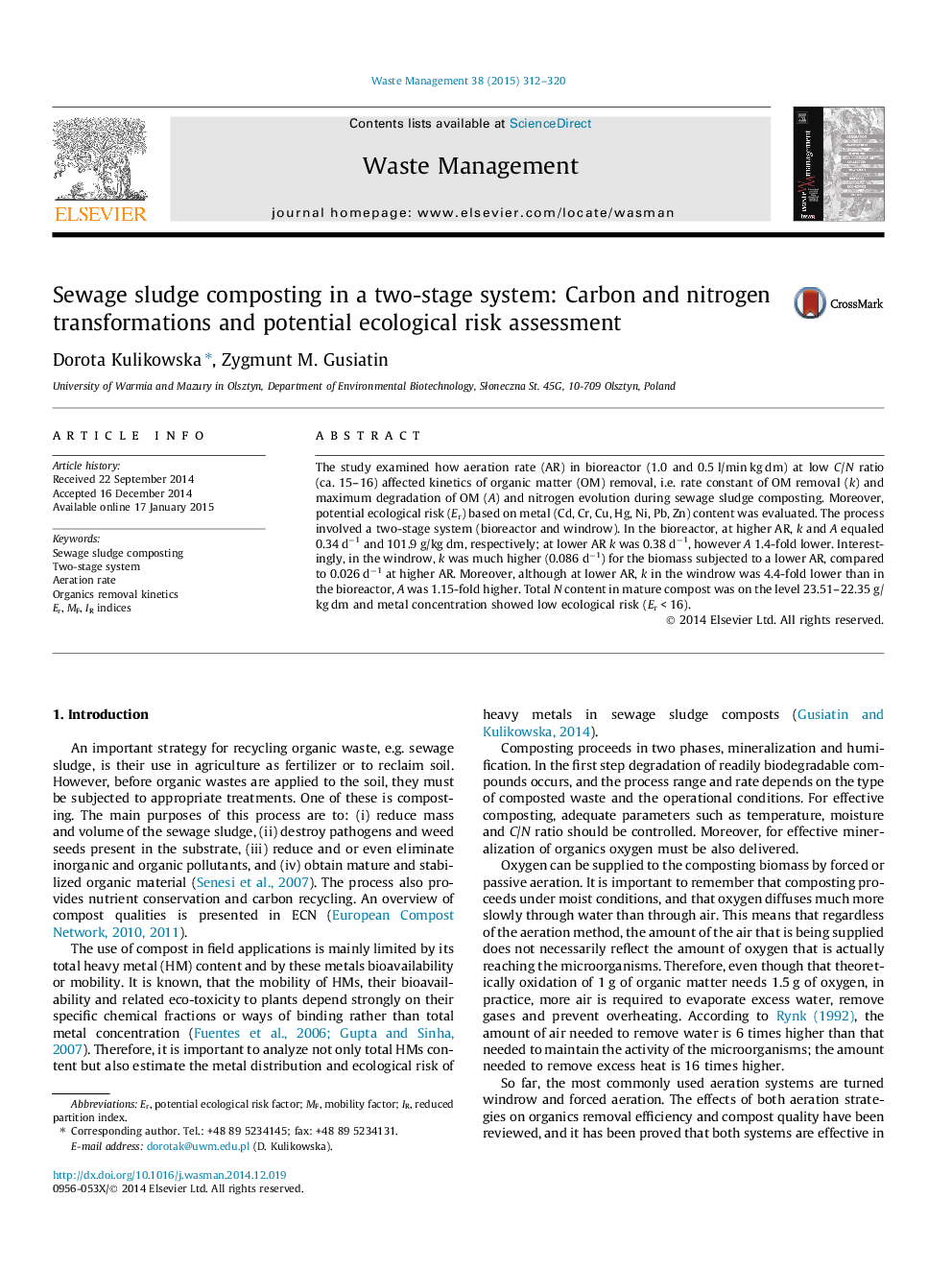| کد مقاله | کد نشریه | سال انتشار | مقاله انگلیسی | نسخه تمام متن |
|---|---|---|---|---|
| 4471417 | 1622647 | 2015 | 9 صفحه PDF | دانلود رایگان |
• Sewage sludge was composted in a two-stage (aerated bioreactor, turned windrow).
• Process was conduced at two aeration rates (AR) in bioreactor.
• AR affects kinetics of OM removal both in the bioreactor and in the windrow.
• In compost, metals occurred in stable forms – IR in the range 0.65–0.89.
• Composts showed low potential ecological risk (Er < 16).
The study examined how aeration rate (AR) in bioreactor (1.0 and 0.5 l/min kg dm) at low C/N ratio (ca. 15–16) affected kinetics of organic matter (OM) removal, i.e. rate constant of OM removal (k) and maximum degradation of OM (A) and nitrogen evolution during sewage sludge composting. Moreover, potential ecological risk (Er) based on metal (Cd, Cr, Cu, Hg, Ni, Pb, Zn) content was evaluated. The process involved a two-stage system (bioreactor and windrow). In the bioreactor, at higher AR, k and A equaled 0.34 d−1 and 101.9 g/kg dm, respectively; at lower AR k was 0.38 d−1, however A 1.4-fold lower. Interestingly, in the windrow, k was much higher (0.086 d−1) for the biomass subjected to a lower AR, compared to 0.026 d−1 at higher AR. Moreover, although at lower AR, k in the windrow was 4.4-fold lower than in the bioreactor, A was 1.15-fold higher. Total N content in mature compost was on the level 23.51–22.35 g/kg dm and metal concentration showed low ecological risk (Er < 16).
Journal: Waste Management - Volume 38, April 2015, Pages 312–320
